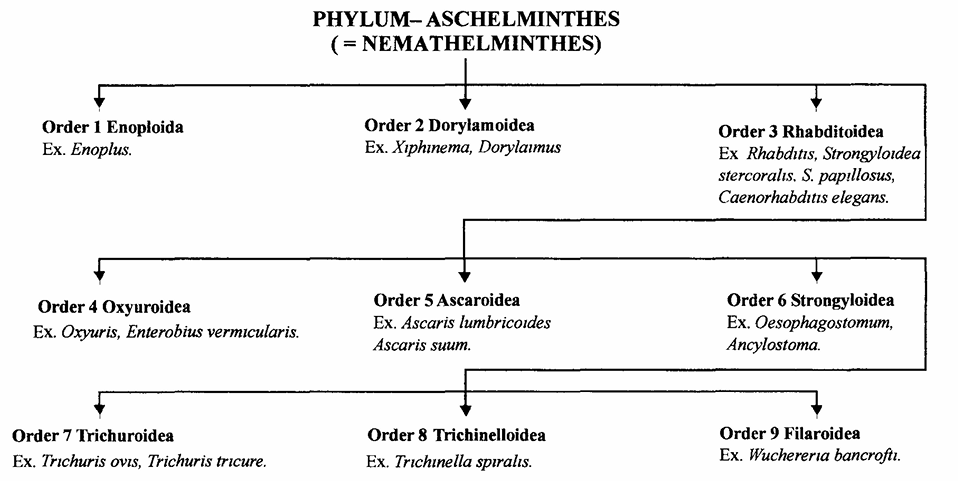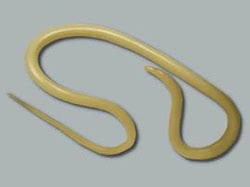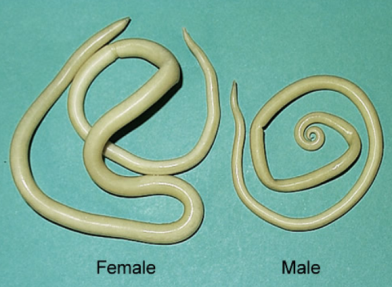Phylum Aschelminthes
Phylum Aschelminthes, also known as Nemathelminthes, includes a group of pseudocoelomate, unsegmented, and bilaterally symmetrical invertebrates. These organisms are mostly microscopic or small, and they occupy a variety of habitats ranging from freshwater and marine environments to soil and the internal organs of animals and plants as parasites. This phylum includes many well-known roundworms like Ascaris, Enterobius, Wuchereria, and Ancylostoma.
In this comprehensive guide, we will explore everything about Phylum Aschelminthes, including its characteristics, classification, reproduction, examples, and importance, making it a valuable SEO resource for students, educators, and biology enthusiasts.
General Characteristics of Phylum Aschelminthes
Organisms belonging to this phylum share several common morphological and physiological traits. Some of the key characteristics include:
1. Body Structure
- Aschelminthes have an elongated, cylindrical, and unsegmented body.
- They exhibit bilateral symmetry, meaning the left and right sides of their bodies are mirror images.
- Their bodies are covered by a tough, protective cuticle that resists digestive enzymes in parasitic forms.
2. Pseudocoelomates
- These organisms possess a pseudocoelom, a body cavity that is not fully lined with mesoderm.
- The pseudocoel acts as a hydrostatic skeleton, helping in movement and distribution of nutrients.
3. Digestive System
- The digestive system is complete, meaning it has a distinct mouth and anus.
- The alimentary canal is straight and tubular.
4. Nervous System
- They have a simple nervous system consisting of a nerve ring and longitudinal nerve cords.
5. Excretory System
- Most Aschelminthes excrete waste through renette cells or excretory canals.
- They do not have a circulatory or respiratory system; gas exchange occurs through diffusion.
6. Sexual Dimorphism
- Most species are dioecious (male and female sexes are separate).
- Sexual dimorphism is evident, with males generally smaller than females.
Classification of Phylum Aschelminthes
Phylum Aschelminthes was once a large group, but modern taxonomy has reclassified it into several phyla. However, in many educational contexts, the traditional classification is still taught for simplicity.

Major Classes of Aschelminthes:
1. Class Nematoda (Roundworms)
- Includes both free-living and parasitic species.
- Examples: Ascaris lumbricoides, Enterobius vermicularis, Wuchereria bancrofti, Ancylostoma duodenale.
2. Class Rotifera
- Also called wheel animalcules due to the ciliated corona near the head.
- Mostly freshwater organisms, often microscopic.
- Known for parthenogenetic reproduction in some species.
3. Class Gastrotricha
- Small, free-living aquatic animals.
- Covered with cilia on the ventral side for locomotion.
Note: In modern classification, these classes are often elevated to separate phyla under Pseudocoelomata, but for introductory biology, they are grouped under Aschelminthes.

Reproduction in Aschelminthes
Sexual Reproduction
- Most Aschelminthes reproduce sexually.
- Males produce sperm; females produce eggs.
- Fertilization is usually internal.
- Development can be direct or indirect (involving larval stages).
Asexual Reproduction
- Rare in this phylum, but observed in some rotifers, particularly through parthenogenesis.
Examples of Phylum Aschelminthes
1. Ascaris lumbricoides (Human Roundworm)
- A common intestinal parasite in humans.
- Causes ascariasis.
2. Enterobius vermicularis (Pinworm)
- Infects the rectum and anal region, especially in children.
- Causes intense itching.
3. Wuchereria bancrofti
- Transmitted by mosquitoes.
- Causes lymphatic filariasis or elephantiasis.
4. Ancylostoma duodenale (Hookworm)
- Attaches to the intestinal wall.
- Feeds on blood, leading to anemia.
5. Rotifers
- Free-living microscopic animals.
- Found in freshwater habitats, essential to the aquatic food chain.

Economic and Medical Importance of Aschelminthes
✅ Positive Roles
- Rotifers play a key role in freshwater ecosystems and nutrient recycling.
- Some species help in biological control of pests.
- Serve as a model organism in developmental biology studies (e.g., Caenorhabditis elegans).
❌ Negative Impact
- Many species are parasitic and cause serious diseases in humans, livestock, and crops.
- Lead to economic losses in agriculture and healthcare sectors.
Diseases Caused by Aschelminthe
| Parasite | Disease | Mode of Transmission |
|---|---|---|
| Ascaris lumbricoides | Ascariasis | Ingestion of eggs from contaminated food or water |
| Wuchereria bancrofti | Elephantiasis | Bite of infected mosquitoes |
| Enterobius vermicularis | Pinworm infection | Fecal-oral route |
| Ancylostoma duodenale | Hookworm infection | Skin penetration by larvae in soil |
Conclusion
Phylum Aschelminthes represents a diverse and significant group of pseudocoelomate animals. While many of its members are harmless or even beneficial in ecosystems, several others are notorious parasites causing diseases in humans and animals. Understanding the biology and life cycles of Aschelminthes is essential for controlling the spread of parasitic infections and promoting environmental health.
As biological classification continues to evolve, many scientists now prefer to use more refined taxonomic systems. However, the traditional grouping under Aschelminthes still provides a useful framework for introductory biological studies.
FAQs About Phylum Aschelminthes
Q1. Are Aschelminthes and Nematoda the same?
No. Nematoda is a class (or phylum, in modern classification) within the larger group traditionally known as Aschelminthes.
Q2. What type of body cavity is found in Aschelminthes?
They possess a pseudocoelom, which is a body cavity not entirely lined by mesoderm.
Q3. How are Aschelminthes different from Platyhelminthes?
- Aschelminthes have a complete digestive system, while Platyhelminthes have an incomplete one.
- Aschelminthes are pseudocoelomates; Platyhelminthes are acoelomates.
Q4. Which Aschelminthes causes elephantiasis?
Wuchereria bancrofti is the primary roundworm that causes elephantiasis.
References
- https://byjus.com/neet/short-notes-of-biology-for-neet-aschelminthes/
- https://microbenotes.com/phylum-aschelminthes/
- https://www.britannica.com/animal/aschelminth
- https://en.wikipedia.org/wiki/Aschelminth
- https://www.gcwk.ac.in/econtent_portal/ec/admin/contents/161_18ZC101_2020120809193583.pdf
- https://www.biologydiscussion.com/invertebrate-zoology/phylum-aschelminthes/phylum-aschelminthes-characters-and-classification-animal-kingdom/69864
- https://ucmp.berkeley.edu/aschelminthes/aschelminthes.html
- https://www.vedantu.com/animal/aschelminthes
- https://www.aakash.ac.in/important-concepts/biology/phylum-aschelminthes
- https://www.biologydiscussion.com/animals-2/aschelminthes/aschelminthes-taxonomic-retrospect-and-characteristics/32883
- https://sacollegenaregal.edu.in/wp-content/uploads/2024/10/Ascyhelminthes.pdf
- https://www.youtube.com/watch?v=w0-1QEAHFtQ
- https://www.pw.live/chapter-classification-of-animals-chordates/phylum-aschelminthes
- https://www.scribd.com/document/847851186/Classificationof-Phylum-Aschelminthes
- https://www.slideshare.net/DrBGRPublications/general-characteristics-of-aschelminthes-drbgr-publications
- https://www.youtube.com/watch?v=KCiLxfCx634
- https://microbiologynotes.com/general-characteristics-of-phylum-nemathelminthes/

Pingback: Ascaris lumbricoides | Zoologyverse | 2025